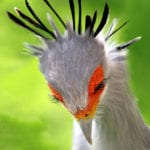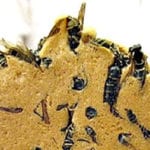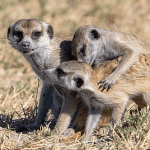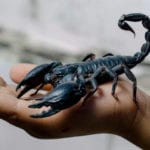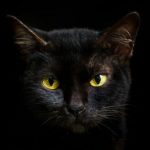 Crime
Crime  Crime
Crime  Technology
Technology 10 Hilariously Over-Engineered Solutions to Simple Problems
 Miscellaneous
Miscellaneous 10 Ironic News Stories Straight out of an Alanis Morissette Song
 Politics
Politics 10 Lesser-Known Far-Right Groups of the 21st Century
 History
History Ten Revealing Facts about Daily Domestic Life in the Old West
 Weird Stuff
Weird Stuff 10 Everyday Products Surprisingly Made by Inmates
 Movies and TV
Movies and TV 10 Actors Dragged out of Retirement for One Key Role
 Creepy
Creepy 10 Lesser-Known Shapeshifter Legends from Around the World
 Animals
Animals 10 Amazing Animal Tales from the Ancient World
 Gaming
Gaming 10 Game Characters Everyone Hated Playing
 Crime
Crime 10 Terrifying Serial Killers from Centuries Ago
 Technology
Technology 10 Hilariously Over-Engineered Solutions to Simple Problems
 Miscellaneous
Miscellaneous 10 Ironic News Stories Straight out of an Alanis Morissette Song
Who's Behind Listverse?

Jamie Frater
Head Editor
Jamie founded Listverse due to an insatiable desire to share fascinating, obscure, and bizarre facts. He has been a guest speaker on numerous national radio and television stations and is a five time published author.
More About Us Politics
Politics 10 Lesser-Known Far-Right Groups of the 21st Century
 History
History Ten Revealing Facts about Daily Domestic Life in the Old West
 Weird Stuff
Weird Stuff 10 Everyday Products Surprisingly Made by Inmates
 Movies and TV
Movies and TV 10 Actors Dragged out of Retirement for One Key Role
 Creepy
Creepy 10 Lesser-Known Shapeshifter Legends from Around the World
 Animals
Animals 10 Amazing Animal Tales from the Ancient World
 Gaming
Gaming 10 Game Characters Everyone Hated Playing
10 Animals That Use Waste to Survive and Thrive in Their Habitat
As humans, our digestive system plays a crucial role in breaking down the food we consume, allowing the nutrients to aid in growth and development, all while also eliminating any waste from the body. While this body system is incredibly important, once the digestive process is complete, our waste moves on, as do we without a second thought.
Our bodily waste is seen as a gross byproduct, and we certainly have no need to save it, use it as a weapon against our foes, or, dare we say, consume it as any type of survival mechanism.
However, these animals have adapted to use not only their waste but the waste of other organisms to regulate their body temperature, defend themselves against potential enemies, improve the immune function of their offspring, and ensure that their food source is replenished within their natural habitat.
Here are ten incredible animals that use waste to not only survive but to thrive in their habitat.
Related: Top 10 Really Weird Facts About Poop
10 Shoebill
The shoebill bird, or Balaeniceps rex, is a large water bird that stands between 3.5 and 5 feet (1 and 1.5 meters) tall. These prehistoric-looking birds were named shoebill due to their distinguishing foot-long bill that resembles a Dutch clog.
This specialized bill allows the bird to easily grab and consume large prey such as lungfish, eels, tilapia, snakes, and even baby crocodiles and Nile monitor lizards within the marshes and swamps of East Africa.
These fascinating birds are known for their keen hunting skills and their ability to remain still for hours at a time as they observe their unsuspecting prey. They not only play a crucial role in keeping the ecosystem in check but also have a unique way of surviving the warm African temperatures—they poop on themselves.
Like most birds, shoebill feces is actually mostly liquid. Therefore, as they poop on their own legs, the waste cools down the warm blood that typically flows through their legs. This, in turn, allows much cooler blood to circulate through the shoebill’s body despite the warm temperatures.[1]
9 Cassowary
Cassowaries are large, flightless birds found in the tropical forests and wetlands of Northern Australia, New Guinea, and surrounding islands.
These birds are covered in two-quilled, jet-black feathers, have a large casque or “helmet” that adorns the top of their head, and have wattles (a fleshy pouch of skin that hangs down from their neck). These wattles come in a variety of bright colors, such as blue, red, gold, purple, or white.
While the cassowary’s physical features are incredibly unique, they are also considered to be the most dangerous bird in the world due to their dagger-like claws that can easily slice a predator wide open.
Apart from its stunning appearance and ferocious behavior, the cassowary also has a short digestive tract, a highly active liver, and unusual stomach enzymes, allowing it to consume toxic fruits and seeds without any adverse side effects. Unfortunately, this also means that as the cassowary swallows fruit whole, much of it is only partially digested. The rest is then passed into their feces.
However, their short digestive tract and ability to pass these seeds make cassowary poop essential to their environment. They are known as rainforest gardeners for this very reason.
Given that cassowaries consume fruit from 238 different species of plants, and these seeds are passed through their digestive system unharmed, the seeds are then fertilized and distributed over large areas throughout the rainforest. Cassowaries and their tree-growing poo play a vital role in maintaining the diversity of their habitat, ultimately ensuring their survival.[2]
8 Pika
Pikas are small, short-legged mammals resembling a cross between a guinea pig and a rabbit and reside in the mountains of North America and Asia. While there are 29 species of pika worldwide, all species remain small in stature measuring only 6 inches (15 cm) in length and weighing between 4.5 to 7.1 ounces (125 to 200 grams).
One of these species, the plateau pika, lives on the Qinghai-Tibetan plateau in northwestern China, where temperatures can reach -20°F (-29°C) in the winter. Unfortunately, these tiny mammals have no blubber to insulate their bodies from such extreme temperatures and do not hibernate like other cold-weather animals.
Even in light of these challenges, the plateau pika has adapted in order to survive the harsh winter by slowing down their metabolism by as much as 30% and also by consuming yak droppings in order to provide their bodies with much-needed nutrients.
While this behavior may seem appalling, the dry, cold winter environment causes the plants they eat to shrivel up and grasses to become brittle, leaving the pika without a traditional food source. Without the consumption of yak droppings, the plateau pika would have no other source of nutrients to make it through the winter months.[3]
7 Tortoise Beetle
Just as their name suggests, tortoise beetles resemble miniature turtles but measure less than 0.5 inches (5-12 mm) in length.
These beetles have a domed carapace very similar to the upper shell of a turtle that can range in color from dull orange to green to gold, with some species being translucent. In fact, the tropical tortoise beetles are the most brilliantly colored of the species. They are, therefore, often used in making jewelry.
Not only do these incredible beetles have distinguishing physical features, but many species also have the ability to change their carapace from shiny to matte or from one color to another within a matter of seconds. For example, when under external stresses, the golden tortoise beetle can change its color from gold to shiny red or golden orange and even add black spots, all by moving pigment through microscopic ducts located within their exoskeleton.
Aside from their color-changing ability, tortoise beetle larvae also utilize a rather bizarre camouflage technique to protect themselves from enemies—they use their fecal matter (or frass) combined with caste exoskeletons to create an “umbrella” that will hide them while grazing on leaves.
The somewhat flattened tortoise beetle larva has an abdominal section that contains a “fecal fork,” which the larva uses to attach its feces, creating the protective parasol. Not only do these fecal shields serve as a form of camouflage, but the tortoise beetle also uses them as a smelly barrier to deter any potential predators. The larva also have the ability to reposition the fecal umbrella as needed to face a predator.
Given their sedentary habits and diet of foliage, tortoise beetles are often exposed to threats, and these poo umbrellas provide a much-needed form of protection for their survival.[4]
6 Egyptian Vulture
Egyptian vultures can be found in southern Europe, the Middle East, Central Asia, and in parts of North Africa. They are one of the few bird species known to use tools, such as pebbles, to crack open large ostrich eggs.
These birds were regarded as sacred by the ancient Egyptians as a symbol of the goddess Isis—the goddess of fertility, motherhood, and magic. In fact, it was so sacred that its image was also used in hieroglyphics.
While small in stature, measuring 21 to 25 inches (54 to 66 cm) in length and weighing between 3.5 and 5.2 pounds (1.6 and 2.4 kg), they have a striking physical appearance that consists of a contrasting white and black primary and secondary feathers with a bright yellow face. The behavior behind the bird’s bright yellow face is both fascinating and disgusting.
Carotenoids are groups of red, yellow, and orange pigments that play a crucial role in the biological coloration of animals. However, given that Egyptian vultures feed on rotten flesh and garbage, they are unable to obtain enough carotenoids through their traditional food source. Therefore, they eat cow, sheep, and goat droppings as a way to obtain these nutrients and ensure their bright yellow color.
Not only does this behavior ensure the vulture’s bright yellow complexion, but it may also aid in impressing a mate. It can also serve as an intimidation tactic for any competitors, given that the bright yellow color is a symbol of health and strength within the species.[5]
5 Opossum
Opossums are marsupials that have gray or whitish fur, a long pointed snout, and a long hairless tail that spans over one-third of its 2.5-foot long (76-cm) body. They are also the only marsupials native to North America.
With 50 teeth, more than any other land mammal in North America, opossums have a wide variety of food sources, such as fruit, snakes, mice, rats, ticks, cockroaches, and even venomous snakes. In fact, they are immune to the venom of rattlesnakes, cottonmouth snakes, and other pit vipers.
Opossums are, however, among the shortest-lived mammals for their size, typically living only two to four years. With such a short life span and threats from predators such as owls, coyotes, bobcats, foxes, and domestic dogs, opossums have developed quite a clever way of protecting themselves.
Their behavior, which is commonly referred to as “playing possum,” consists of keeling over, playing dead, defecating, and then releasing a foul green slime from their anal glands. By doing this, any potential predator will assume the opossum is dead and lose interest.[6]
4 Baleen Whales
Baleen whales have specialized bristle-like structures in their mouth called baleen, which are made up of keratin, the material that makes up human fingernails. Therefore, rather than using any type of teeth, these whales open their mouths, allowing enormous amounts of water to flow in. From there, they close their mouths and squeeze any excess water out through the sides, leaving behind the krill that has been trapped in the baleen’s bristles.
Baleen whales include species such as the humpback, fin, right, bowhead, gray, and blue whale, all of which eat krill. Given that an individual blue whale can consume an average of 16 tons of food each day, not only is there a great deal of eating that takes place in the ocean, but there are also huge amounts of excrement flowing back into the water.
However, whale feces is some of the most iron-rich material in the ocean. So as these whales eat, digest, and dispose of krill through their feces, it is sent to the surface of the water. There, photosynthesis allows tiny phytoplankton to grow, which krill then feed on.
Therefore, the whale waste fertilizes the ocean, essentially allowing them to aid in the regrowth of phytoplankton which will then feed the krill, their primary food source.[7]
3 Koala
The word “koala” is believed to have originated from the Australian Aboriginal language Dharug and means “no drink” or “no water.” This is fitting, given that a koala’s primary source of water comes from eating eucalyptus leaves.
These marsupials reside in the eucalyptus forests of southeastern and eastern Australia and consume more than 1 pound (0.45 kg) of eucalyptus leaves each day. While eucalyptus leaves contain toxic compounds, koalas have a specialized digestive system that allows them to break down these toxic oils.
First, koalas use their molars to grind the leaves into a paste which then allows any remaining nutrients to be absorbed by their stomachs. From there, the liver isolates the eucalyptus toxins, which are later excreted through the koala’s urine and feces. The remaining residue is then broken down by specialized bacteria housed in their digestive system.
Unfortunately, koalas are not born with this bacteria in their system. As infants, they must obtain it from their mother in order to process their eucalyptus diet as an adult.
However, in order to do so, baby koalas must eat a specially made form of their mother’s poop called pap. While this behavior seems gross, it allows a koala to gain the essential gut bacteria needed for consuming eucalyptus. Without it, the koala could not survive.[8]
2 Mistletoebird
The mistletoe bird, also known as the Australian flowerpecker, the mistletoe flowerpecker, or the fire-breasted flowerpecker, is found throughout mainland Australia and some of the islands further north wherever mistletoe grows.
The male mistletoe bird has a glossy blue-black back and tail with a red throat and chest. The female mistletoe bird, however, has a much more pale appearance, with a gray upper body and a white underbelly with a gray streak.
These birds feed on nectar, pollen, insects, and spiders, but their main food source is mistletoe berries, hence, their name.
However, the mistletoe bird has no gizzard—a hind part of the stomach made for grinding food. But thanks to its specialized digestive system, mistletoe seeds are passed through its digestive tract within approximately 25 minutes of consumption completely unharmed.
When the seeds are excreted, they are covered in a sticky coating. For the mistletoe bird to clean the seed off its rear, it rubs itself against the tree branches, a practice known as the waggle-dance. The seeds are safely left behind on the mistletoe branches and are ready for germination.
Since mistletoe is a parasitic plant that relies on a host for germination, the mistletoe bird’s behavior and specialized poo ensure a replenishing food supply for the species.[9]
1 Vampire Squid
The vampire squid’s scientific name is Vampyroteuthis infernalis, which translates to “vampire squid from hell.” However, while it shares characteristics with both squid and octopuses, it is not actually a squid at all. Instead, it occupies a scientific classification all its own.
Vampire squid can be either a reddish rust color or black, depending on the region they inhabit. They have large eyes—in fact, the largest eyes of any living animal. They are clear, but when illuminated by light, they reflect off the surrounding water and appear to be blue in color.
They can be found 2,000 to 3,000 feet (609 to 914 meters) below the surface of temperate and tropical waters of the Pacific, Atlantic, and Indian Oceans, where oxygen concentration is low. Given that vampire squid live in such deep waters, this means there are few predators who can survive in their environment. However, this also means limited prey for the vampire squid.
Despite the challenges of its environment, the vampire squid has adapted to survive, acting as “the garbage disposal of the ocean.” It consumes “marine snow,” which is essentially a combination of dead animal material, feces, and mucus.
Therefore, the vampire squid is the only living cephalopod species known to be a scavenger. It has adapted to not only clean up the ocean’s waste but also to provide itself with a food source to thrive within such a difficult environment.[10]
